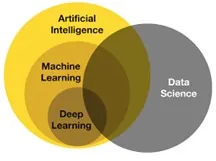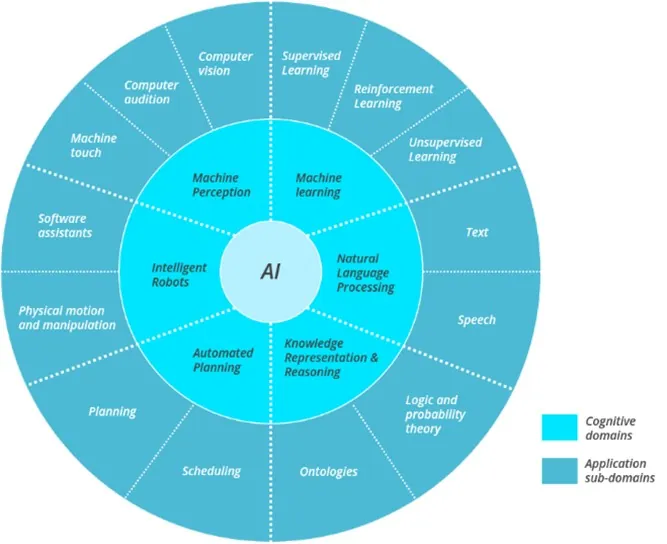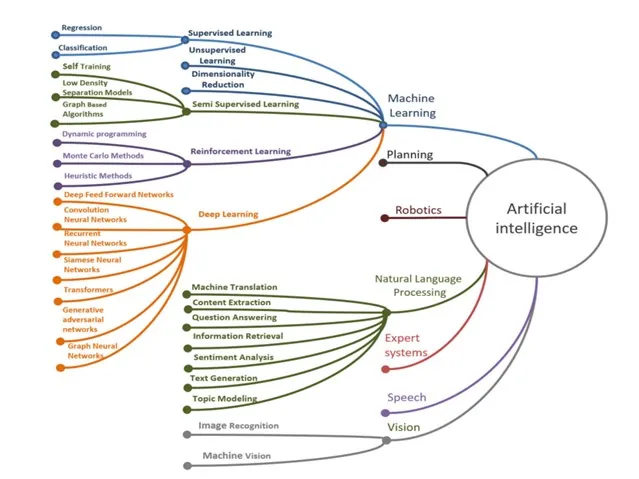Artificial intelligence (AI) and machine learning (ML) are reshaping our world, opening doors to new innovations and smarter ways of working. Let’s explore AI and ML basics, their real-world uses, and the latest government regulations guiding their development and use.
AI is the big picture – it’s all about creating systems that mimic human intelligence. This includes everything from ML to symbolic reasoning and understanding complex information. ML, a sub-field of AI, zeroes in on algorithms that get smarter as they go, learning on their own without needing constant updates.
Then there’s data science. This field mixes computer science, statistics, and math to pull valuable insights from data. It’s a broad cross-cutting area that covers data engineering and visualization, and it spans the entire journey of data – from collecting it to making sense of it. Unlike ML, which focuses primarily on algorithms, data science plays a major role in AI and ML by handling and analyzing data in various forms.
Where AI, ML, and Data Science Intersect and Diverge
AI, ML, and data science intersect significantly. ML is a core component behind many AI applications – it’s essential to most of the AI tech we use today. Data science often taps into ML too, using its algorithms to build models from mountains of data.
But here’s how they differ: AI’s goal is to create systems that truly think and act like humans. ML and data science, while part of the AI universe, have their own specific focuses. ML hones in on developing smarter algorithms, and data science cuts across AI and ML and is focused on turning data into insights. Each plays a unique, vital role in the broader world of AI.
Understanding AI’s Taxonomy: Two Key Perspectives
There are two main ways to categorize AI: by its application domains and by its approaches or techniques. When we look at AI through the lens of application domains, we’re talking about how AI is used in interfacing with the real world. This gives us a wide view of AI’s role and impact in various sectors.
On the flip side, if we focus on approaches or techniques, we dive into the nitty gritty of AI, like regression and classification methods, deep learning methods like neural networks and transformers, among others. This approach offers a deeper understanding of the technical side of how AI works and is implemented.
Source: Link
The Diverse Realms of Machine Learning
ML branches out into distinct areas, each with its own purpose and applications. In unsupervised learning, the goal is to sort or group data without any pre-labeled categories. It’s great for spotting natural patterns or clusters in data, which can then inform more focused, supervised learning.
Supervised learning, on the other hand, works with labeled data. It’s used for tasks like classification (think identifying whether an image shows a dog or a cat) and regression (like predicting a house’s price based on its features). Another key area is forecasting, which relies on historical data to predict future scenarios in fields such as energy use, stock market trends, and retail sales during holiday seasons.
Source: Link
AI/ML in Action: From Vision to Speech and Beyond
The world of AI and ML is brimming with practical, real-world applications. Take computer vision – it’s not just about snapping photos. It’s used to spot potholes in roads, gauge land areas and roof conditions for real estate pricing, and drive cars without human help.
Then there’s Natural Language Processing (NLP). This tech powers the chatbots you chat with, summarizes lengthy texts, categorizes content, checks your spelling, and even predicts the next word you might type.
Ever wonder how Netflix or Amazon seem to know exactly what you like? That’s recommendation engines at work, using AI to personalize your browsing experience. And it’s not just about entertainment or shopping. AI is also optimizing routes for delivery services and fighting against fraud and online threats, keeping our digital world a bit safer.
In this rapidly evolving technology-driven world, understanding AI and ML’s nuances is more crucial than ever. As these technologies progress, they promise vast potential for innovation. But it’s essential to navigate their complexities thoughtfully, considering their technical, practical, and ethical implications, particularly in government settings.
Embracing AI and ML means not only leveraging their capabilities but also ensuring they contribute positively to our society rather than detract from the human experience.
Want to accelerate your agency’s use of AI? Reach out today at info@reisystems.com to explore how our experts offer expertise in the best-proven technologies that advance public missions.
Author:
Anand Trivedi
AI & ML Competency Lead
Connect on LinkedIn








